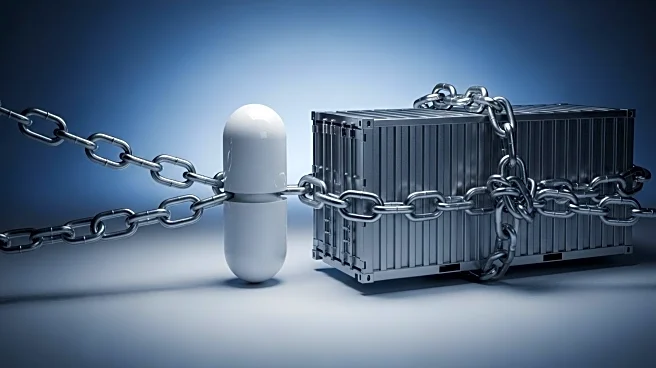What's Happening?
The Trump administration has detailed new tariffs on imported wood, furniture, and kitchen cabinets, initially announced by President Trump. These tariffs, set at 10% for timber and lumber, are part of a broader strategy to reshape the global trading system. The implementation of these tariffs has been delayed by two weeks, now scheduled for October 14. The announcement follows President Trump's social media posts forecasting steep levies, although the actual tariffs are more gradual than initially expected. The tariffs aim to protect national security by targeting products deemed essential, potentially impacting home builders and homeowners.
Why It's Important?
The imposition of tariffs on imported wood and furniture is significant as it reflects President Trump's approach to using trade policy as a tool for economic leverage. These tariffs could affect the U.S. construction and home improvement industries by increasing costs for builders and consumers. The move is part of a larger effort to boost domestic manufacturing and reduce reliance on foreign imports. While the tariffs are lower than anticipated, they still represent a substantial shift in trade policy that could lead to increased prices and potential trade tensions with affected countries.
What's Next?
With the tariffs set to take effect on October 14, stakeholders in the construction and furniture industries are likely to assess the impact on their operations and pricing strategies. Political leaders and trade partners may respond to these tariffs, potentially leading to negotiations or retaliatory measures. The delay in implementation provides a brief window for industry groups to lobby for adjustments or exemptions. The broader implications for international trade relations and domestic economic policy will unfold as the tariffs are enforced.
Beyond the Headlines
The tariffs on wood and furniture highlight the ethical and economic dimensions of using trade policy to influence domestic manufacturing. This approach raises questions about the balance between national security and free trade principles. Long-term shifts could include increased investment in U.S. manufacturing capabilities and changes in consumer behavior due to higher prices. The policy also underscores the cultural and political dynamics of protectionism in the current administration.










